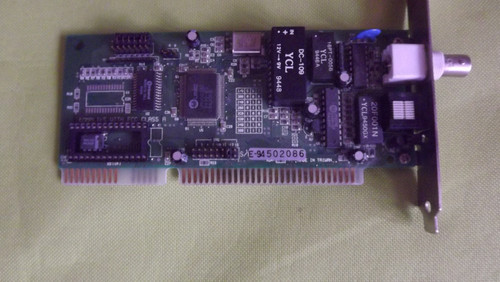First post, by Nunoalex
Hi everyone !
I dont really know if this is a hardware or software issue to be honest 🙁
I'm trying to connect my 486 DX2 66 mhz to my home lan in order to get file sharing and thus transfer files easier to the machine
I have an unbranded ISA network card with 2 sockets, one the normal RJ45 and the other the older BNC? coaxial connection
It has UMC chips and YCL chips as well as a big DC-AC converter and an empty socket for a ROM
It is similar but not exactly like this one...
https://www.ebay.com/itm/203776907628
Anyways windows 95 installed the adapter and "NE2000 compatible" and when I plug the cable the little light in the back comes on (but I have never seen it blinking)
I have added the TCP/IP protocol and manually set up an IP address in the range of my LAN (192.168.1.115) added the subnet mask and configured the Gateway to my router adress (192.168.1.254)
In windows winipcfg the data is all set correctly
But nothing happens, network neighborhood sees my computer and even drive C: as I have set it to share
I can ping both the localhost and my own computer IP but when I try to ping the router 192.168.1.254 it doesn't connect
Can someone help? Do I need a more specific driver for that uknown card or "NE2000 compatible" is enough? Is it a problem with my router (A technicolor) that is blocking older protocols or something?
Thank you guys!
Nuno
